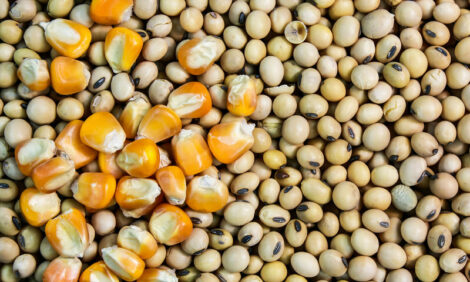



Study Suggests Some Montana Calves Fed Too long
US - A statistical analysis of carcass data for calves enrolled in the Montana Beef Network suggests that some cattle feeders in the Midwest are feeding Montana calves too long, says John Paterson, Montana State University Extension beef specialist.The cattle feeders who bought those calves were evidently pushing the envelope, hoping to earn more money by marketing heavier than normal animals. In doing so, they ended up with carcasses that were potentially too fat, Paterson said. Today's consumers prefer steaks that are not excessively fat, but still juicy, tender and flavorful.
Andy Kellom with the Montana Beef Network analyzed the statistics produced by calves that were enrolled in the network between 1999 and 2005. He then compared each year's results to the 2005 National Beef Quality Audit, which was recently published. That research was conducted by Colorado State, Texas A & M, Oklahoma State, and West Texas A & M universities. Kellom presented a poster of his findings at the 2007 Montana Livestock Forum and Nutrition Conference in Bozeman.
Kellom found that Montana's calves had carcasses that were fatter than the national average by 18 pounds. The Montana carcasses weighed 814 pounds compared to the national average of 796 pounds.
Paterson said two issues may be involved with the heavier calves: genetics and feedlot management. Feedlot managers are trying to maximize finished steer value by selling calves when they weigh 1,400 pounds live. However, the calves may have a genetic makeup that won't let them be fed to 1,400 pounds without gaining excess fat. In that case, Paterson suggested the calves be sold when they are lighter, at 1,250 pounds for example.
The breed doesn't matter, Paterson added. Previous work has suggested that the ideal carcass weight is approximately 745 pounds, or 1,250 pounds live weight.
The calves' extra weight pushed yield grades to between four and five in Kellom's study, Paterson said. Yield grade indicates the amount of external fat on a calf, so high yield grades are less desirable. Paterson prefers to see steers with a yield grade between one and three, but 20 percent of the Montana calves Kellom analyzed had yield grades of four or five. The national average was 14 percent.
Kellom had some good news for Montanans who enrolled their calves in the Montana Beef Network. He found that the Montana calves beat the national average for the percent that reached a quality grade of choice and prime. Sixty-four percent of the Montana calves yielded choice or prime cuts compared with the national average of 57 percent.
Kellom's study showed that Montana calves are apparently following the national trend toward heavier carcasses, decreasing quality grades and increasing yield grades, Paterson said. In 2001, 78.1 percent of the calves enrolled in the Montana Beef Network produced choice and prime cuts compared to 64.9 percent in 2005. Montana had its highest yield grade and heaviest carcasses in 2005.
TheCattleSite News Desk


